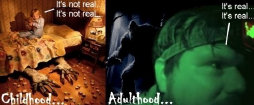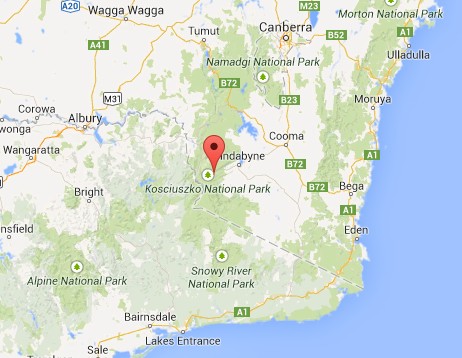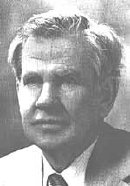
Contact

Home
Nonsense Tales of Hairy Beast
Yowie / Bigfoot
'Nonsense' tales of hairy beast
The Canberra Times
Date: 4 September 1976
Page Number: 9
Online Source
Reports of sightings and prints of a “huge , man-like hairy beast” during recent weeks in the Kiandra, Tidbinbilla, Cooma and Kosciusko district were nonsense, the chief of the CSIRO division of wildlife research, Dr H. J. Firth, said yesterday.
“There is no such animal”, he said. “Some responsible person would have seen it by now. The whole thing is far-fetched.”
The director of the Mount York Natural History Museum, at Mount Victoria, NSW, Mr Rex Gilroy, said in a statement issued recently that he had been searching for the creature, known as the Yowie, for several years
There had been 3,000 reported sightings dating back to 1795 at scattered areas of inland eastern Australia. Sightings had been reported near Cooma and Kiandra this winter.
He described the Yowie as being about two metres tall, covered in long hair, stooped and walking on two legs with a loping gait.
Mr Gilroy had established an Australian Yowie Research Centre at his museum.

The History of Yowie Research
14-03-2014

Now the yowie?
Big Foot has cousin in Australian mountains
Ottawa Citizen
Date: 16 September 1976
Page Number: 69
Online Source
CANBERRA (Reuter)
From the land that produced the duck-billed platypus, the egg-laying mammal, to say nothing of the Tasmanian devil or the numbat, comes the yowie—the antipodean cousin of the legendary Canadian Big Foot.
And just as Big Foot has the penchant for periodically reasserting itself on the public by leaving a footprint in a remote area, the Australian yowie is becoming an unabashed headline-grabber.
The similarities don’t end there. He, or perhaps she, is reputed to be similar in stature to Big Foot, of much the same appearance and with the same predilection for cavorting in the snow.
One of Australia’s most respected naturalists insists the yowie is not a myth—it is alive and well and merely living in seclusion.
Rex Gilroy, director of the Mount York Natural History Museum, says the yowie—the aboriginal word for “great hairy man” —has been the subject of 3,000 reported sightings dating as far back as 1795.
The yowie lumbered back into the headlines recently with the discovery of strange footprints in the snow near Kiandra, in the Snowy Mountains, south-west of here.
The prints were definite in outline and impressive in size and shape—the owner was apparently three-toed and of giant proportions.
Skiers see yowie
Immediately the yowie was back in the public eye. Skiers, most of them patrons of the slopes of Mount Kosciusko in the Snowy Mountains, came forward to report similar sightings.
The yowie, it was claimed, had either been spotted loping up the side of the mountain, which at 7,314 feet is Australia’s tallest, or had left its footprints in generous quantities over the surrounding countryside.
The issue gradually became dormant as the hairy creature itself stayed firmly out of the picture.
Not even a blurred ape-like figure captured on film from a safe distance was available to fuel the speculation.
Yet the lack of evidence, no matter how flimsy, has failed to shake Gilroy’s faith in the existence of the creature which, he says is featured extensively in aboriginal folk lore.
Gilroy says the yowie grows to about eight feet tall, is covered from head to foot in long, dark hair if a mountain dweller and short hair if a native of lower altitudes. It is stooped and walks on two legs with a long, loping gait.
“They sleep in trees, rock overhangs and caves, but always in the most [in-]accessible regions, and always close to fresh water.”
The creature, Gilroy says appears to be a sort of gentle great ape, although the naturalist confesses he has never seen one.
“Its habits are similar to those of the great ape in that they are very timid and frightened of humans,” he says.
According to Gilroy’s theory, the yowie is a surviving species of pre-ice age, man-like ape fauna which evolved on mainland Asia and of which the yeti of Abominable Snowman and Big Foot are also surviving remnants.

A Canberra bushwalker, Mr Ken May, said yesterday that he had first heard of the creature after an article in a recent Cooma publication.
“People sometimes joke about it” , he said. He had walked and skied in the Snowy Mountains area for the past 10 years.
Mr Gilroy said the Yowie had existed in eastern Aboriginal folklore for thousands of years but, as an anthropologist pointed out yesterday, so had the bunyip.


The Commonwealth Scientific and Industrial Research Organisation (CSIRO) is the federal government agency for scientific research in Australia.

"The creature, Gilroy says appears to be a sort of gentle great ape, although the naturalist confesses he has never seen one."
Yet
3 months later Gilroy suddenly recalled that he had seen one in 1970 - the details of which continue to change.
"The prints were definite in outline and impressive in size and shape—the owner was apparently three-toed and of giant proportions."
See
picture of alleged prints in the article above.

Harold James Frith
1921-1982
Harry Frith's life spanned a period in Australian society when perceptions about native animals and plants changed from one of regarding most of them as a nuisance to be removed to one of recognising that they are a priceless heritage to be protected and cherished. In his career as a biologist in Australia, Frith played an important role in bringing about that change in perception, through his investigations of the behaviour and ecology of many species of Australian birds and of kangaroos, through his leadership of research on wildlife in CSIRO, through the books he wrote for the general public, and through his influence on conservation policy in State and Federal Governments.










